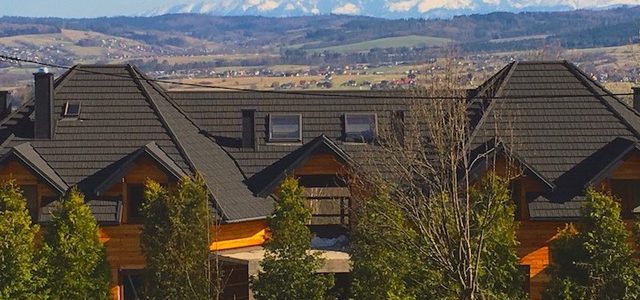
Centre of Light Summer Update 2020 July/August 2020 Satsang | Volume 48 #3 | New Era 77
Table of Contents
Centre of Light Summer Update 2020
Homa Therapy Presentations Now on YouTube
Zoom Agnihotra Meetings-New Format
Centre of Light Summer Update 2020
In these most trying times facing the world today, we have experienced a great increase in visitors, volunteers and people seeking safe haven. Interest in Agnihotra and Homa Therapy has grown exponentially! It appears that many more people are beginning to realize that the world is much more precarious than they could ever imagine.
People are searching for solutions to protect and improve their health, become more self-sustainable, and live a more heart-centered, positive life. There is so much fear in the cities, yet all who come to this high vibration Homa haven leave inspired, deeply touched by their experiences.
All this further highlight the importance of completing Centre of Light as quickly as possible to meet the need of the hour.

It gives us great joy to share with you what has been achieved so far this summer. We have managed to complete the installation of all remaining windows and outside doors, built a beautiful wooden deck facing the majestic Tatra Mountains, and finished the interior walls. Plumbing and electrical installations have begun.
The ceilings, floor heating and base floors will be ready by mid-October, so that clay plastering can begin. This will be a more creative phase which all the resident artists are looking forward to!
We all feel honoured and blessed to be a part of this special endeavor.
We are deeply grateful for your generous donations and also for private loans which have enabled us to reach this point. Not only have those funds helped us to continue building, but it shows your faith in this wonderful project and in us. You inspire us!
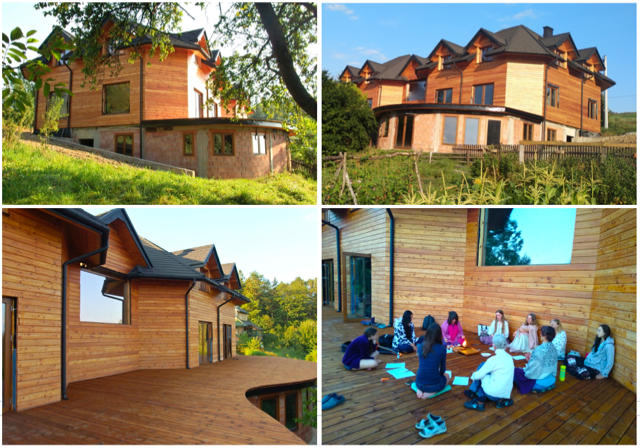
We do have a projected opening date, the end of 2021, so any further financial assistance will help to bring this vision into completion. This Centre of Light project has been a tremendous group effort to manifest and we thank each and every one of you for your continued support!
With love and gratitude,
All of us at Ecovillage Bhrugu Aranya
Homa Therapy Foundation, Poland
To Donate: https://agnihotra.pl/en/news-events/campaign/
FOR THOSE IN THE U.S. WHO WOULD LIKE TO MAKE A TAX-DEDUCTIBLE CONTRIBUTION:
Donations from the U.S. (or from U.S. bank accounts) may be made by check, money order, or online by PayPal, using a credit card or PayPal card.
Donations are tax-deductible as allowed by U.S. law. Please donate through our affiliate NGO in the U.S., Fivefold Path Inc. and choose Centre of Light, Poland project.
Checks and money orders should be made payable to Fivefold Path, Inc.
*Please note “For COL POLAND” on your check or money order.
Mail to:
Fivefold Path, Inc.
278 N. White Oak Drive
Madison, VA 22727 U.S.A.
Homa Therapy Presentations Now on YouTube
Ed.
Four presentations from the International Homa Therapy Online Workshop held June 12-15, 2020 are now available on YouTube at the following link:
https://www.youtube.com/user/HomaTherapyInternatl
The lectures currently available are Introduction to Agnihotra by Lisa Powers and Tom Couto, Homa Communities and Spiritual Ecology by Jarek Bizberg, Environmental Protection with Agnihotra by Lee Ringma, and Homa Psychotherapy by Barry Rathner. All presenters are Certified Homa Therapy teachers.
Podcast on Mind Training
Ed.
Certified Homa Therapy teacher W. Henry Gregory, Jr. Ph.D has started a podcast called, “Mind Training and Homa Therapy: Keys to Happiness”. A new program will be offered every Friday. Drawing from his vast professional and personal experience, Dr. Gregory explores the workings of the human mind, and sheds light on how we can become better, happier managers of our mind energy.

Listen and add some insight to your day! To tune in, go to https://linktr.ee/drgregory
Dr. Gregory is a clinical psychologist with expertise as a clinician, educator, trainer, consultant and researcher in a number of service areas including substance abuse, HIV/AIDS, criminal justice, juvenile justice, child welfare, school-based mental health, and behavioral health.
Currently, Dr. Gregory is an assistant professor at the University of Maryland, School of Nursing. He also provides consultation and training to public and private agencies and direct services to individuals and families through his own organization, the Rafiki Consortium, LLC.
In addition, he is the president of the Baltimore Homa Community (BHC).
Zoom Agnihotra Meetings-New Format
Ed.
The work of spreading and teaching Agnihotra goes on despite changes brought on by the coronavirus. Fivefold Path, Inc. continues to hold monthly Zoom meetings conducted by a Certified Homa Therapy Teacher, to teach and discuss Agnihotra. The program has a new 2-part format.
The first hour consists of an in-depth slideshow presentation on Agnihotra. (This is essentially the same program that was given during the 4-Day Online International Homa Therapy Workshop in June.) We encourage all newcomers, and longtime Agnihotra practitioners, to participate. Those who learned Agnihotra many years ago may not have learned some of the details and refinements that Shree Vasant Paranjpe taught during the later years of His life. Besides, we’d like to meet you!
The second hour is for question-and-answer, and a chance for participants to briefly share their experiences with Agnihotra.
Meetings are usually held on Saturdays or Sundays. If they are not held during Agnihotra time, a brief video demonstrating Agnihotra is shown during the program.
If you would like to join any of these meetings, please email lisacpowers@gmail.com, so that we can send you an invitation.
We ask that you please NOT post your invitation on any public forums, to avoid zoombombing during the meeting.
We look forward to meeting with you!
Food Storage for Survival
Ann Couto, Ginny Ansbergs and Ed.

(This article has been revised and updated from the Satsang Vol 32 #7, May 17, 2005 article. For many years, Shree Vasant advocated food storage; however, a new urgency has unfolded in today’s world. With shipping and delivery capabilities compromised during Covid-19 lockdowns and other restrictions, becoming self-sufficient takes on added significance.
Added to this are the times when it is unsafe to venture out to reinforce food, medicine, and other necessary supplies. In this spirit, we thought it may be helpful to update and reprint this article.-Ed.)
Mother Nature has been battered to the point where she is unable to stay in balance.
Natural disasters and famine are the results of such gross abuse. To be forewarned is to
be forearmed and it is a great blessing to be aware of the present and coming changes.
Self reliance is the key to survival. A well-planned program for food growth and
storage can ensure our having an adequate supply of nourishment in times of need. The
following information is to help you develop your own food plan.
Homa farming and gardening are the way to grow nourishing, life-giving foods in the
polluted conditions under which we live today. For information on Homa farming
and gardening, please visit homafarming.com and see the book Homa Therapy,
Our Last Chance by Vasant V. Paranjpe.
For food storage, a person will need a program for short term and long term storage.
Short term storage refers to food storage for one year or less. It includes canning,
freezing, drying, fresh food storage in the garden, the use of root cellars and other
protected spaces. Long term food storage refers to methods of storing food for up to
five years without infestation or significant loss of quality. The foods used in long term
storage are mostly grains, nuts, seeds, beans and legumes. These supply protein,
fat and carbohydrates. By supplementing these items with foods from the short term
storage (mostly fruits and vegetables), the needs for vitamins, minerals and fiber can be
met. Sprouts, indoor greens and wild foods can round out the diet by adding vitamins,
minerals and enzymes.
Nutrition
In developing your food plan, good nutrition is a major consideration. It is important to
familiarize yourself with your family’s nutritional needs. These needs will vary, depending upon the age and sex of your family members, plus other considerations (such as
special diets or breastfeeding). A basic knowledge of nutrition will help you develop a
food supply that will adequately nourish your family and avoid the many health problems
that are caused by inadequate diet. Many resources available online can provide this information, and your public library or local natural foods store will
probably have a number of references on nutrition.
Strive to include a wide variety of highly nutritious foods in your food plan. This is
the best overall insurance against nutritional deficiencies.
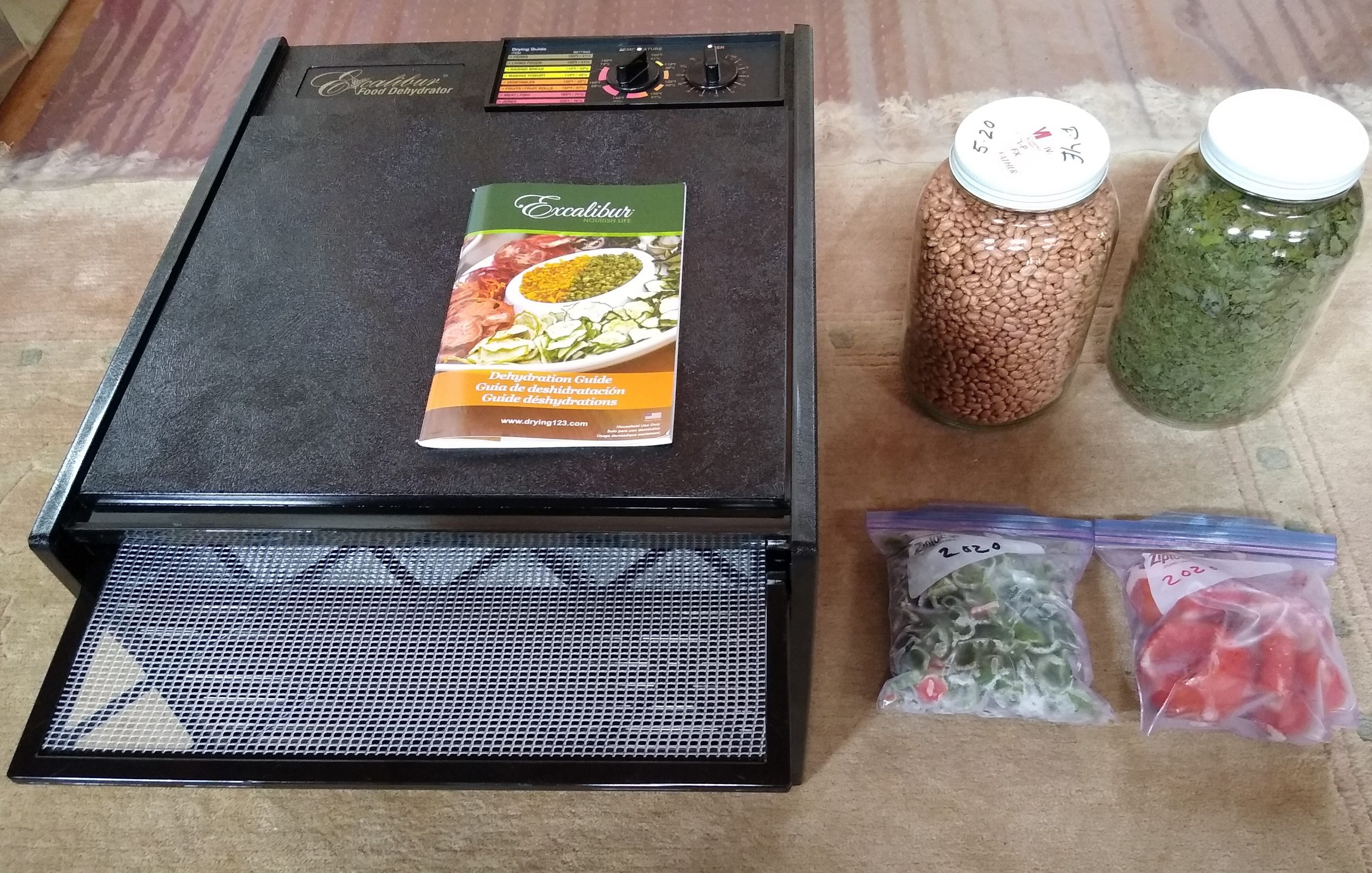
Food Table 1
In canning, we would like to stress that one “go by the book”, i.e., The Ball Blue Book, or
any other standard reference on canning. Although people sometimes get away with
using unapproved methods (depending on the acidity of the food and other factors),
to deviate from the approved methods is to invite disaster. Please don’t run the risk of
illness and wasted food; stick to the tried-and-true methods.
Food dehydration can be a good option, if you can afford a dehydrator and have electricity. Many sizes and models are available on the market, with varying features. In some of the newer models, electric usage is just pennies per day. Another option is to build a solar food dehydrator. Plans for various models can be found online.
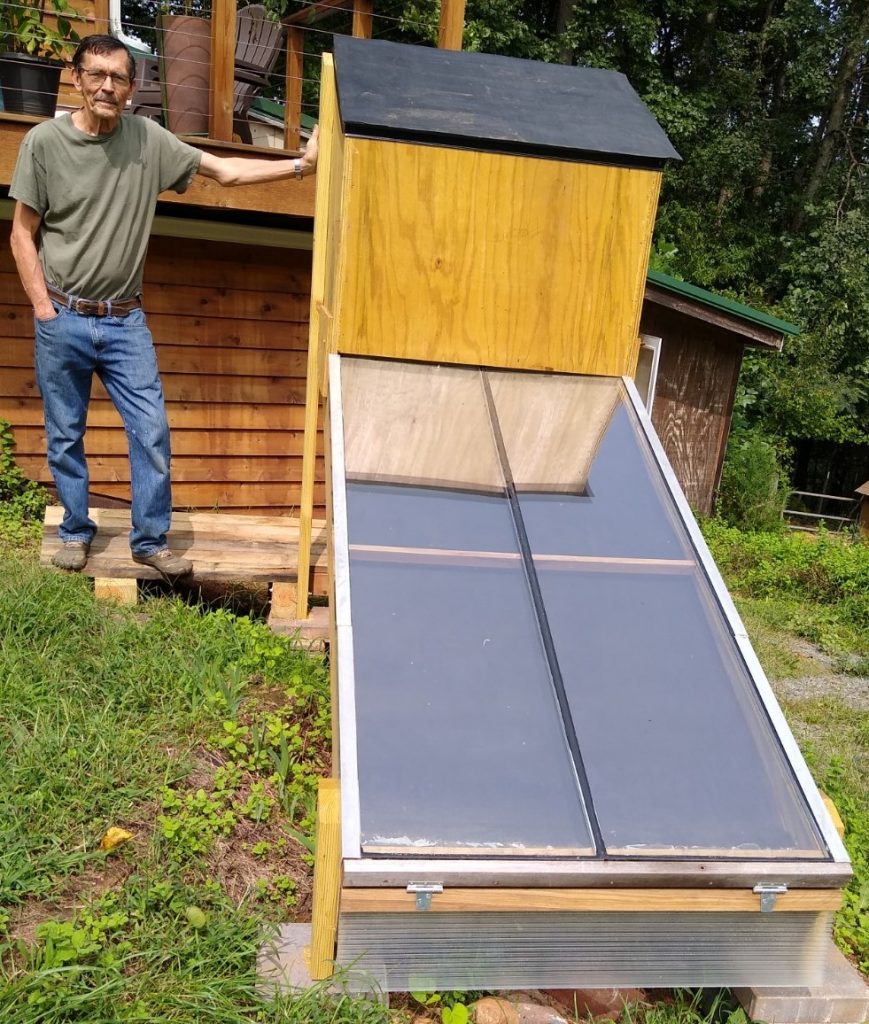
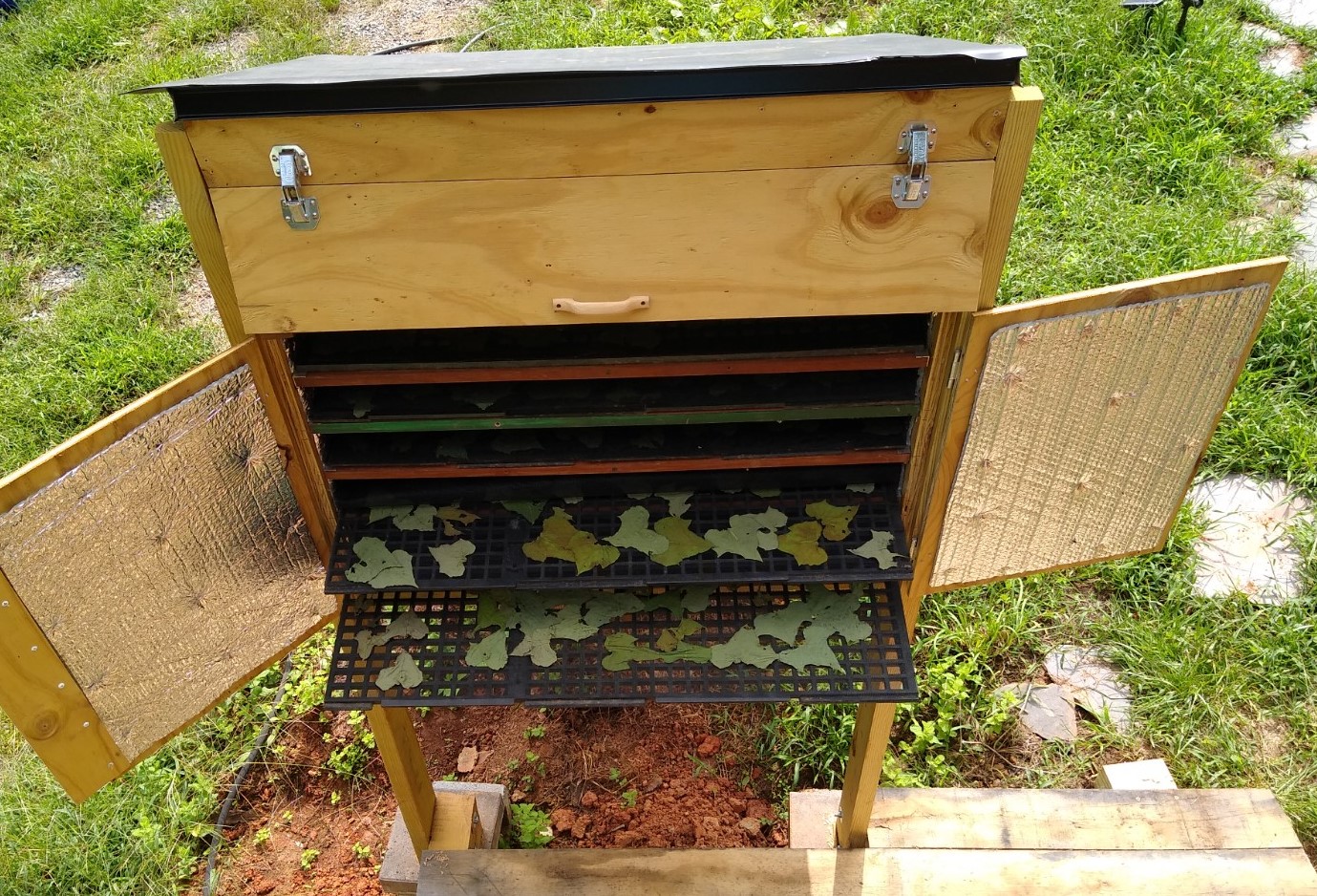
Many grocery stores and natural food stores carry a number of nonperishable packaged
food items which could be used as part of your food plan. Stockpiling these items is an
easy method of food storage.
that can be kept free of insects. They can eat through cardboard and some plastic bags
and infest the food.
your stock and use the oldest items first.
up on special sale items, you can cut the cost even more. Some stores offer a discount for
buying by the case.
–Never eat canned food if the seams of the can are rusty or the ends of the can are
bulging out.
flavus, which produces aflatoxin, a powerful carcinogen. Organic Gardening magazine recommends placing a natural antifungal agent (such as whole cloves, a cinnamon stick or some sprigs of thyme) in the storage containers with the food to prevent this contamination.
We also recommend adding Agnihotra ash.
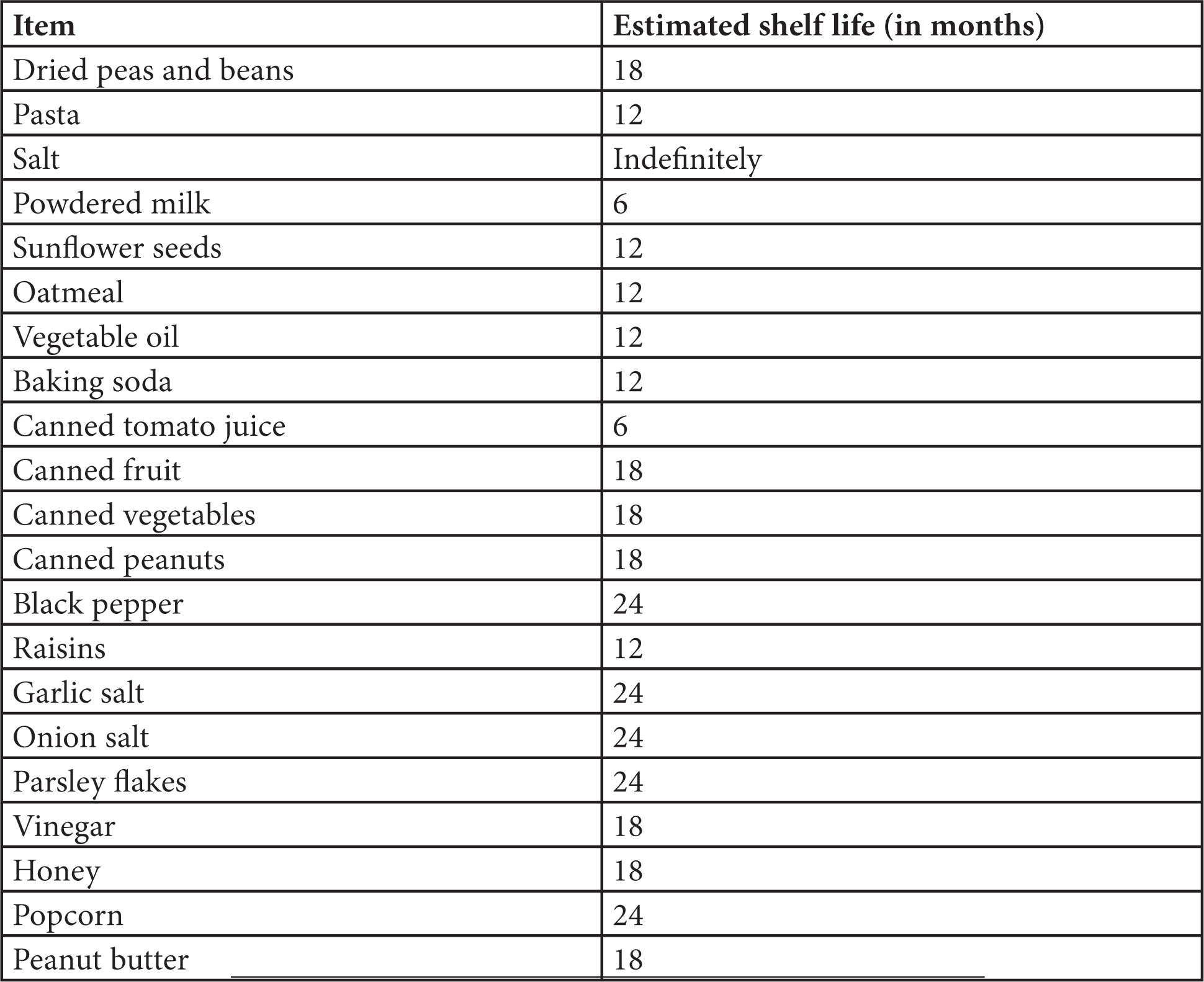
Available Fresh Foods
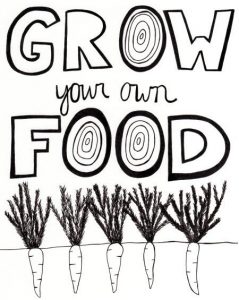 Gardening is essential to food self-sufficiency. We recommend the Homa Therapy organic gardening method mentioned above, which has been shown to produce maximum yield and top quality produce.
Gardening is essential to food self-sufficiency. We recommend the Homa Therapy organic gardening method mentioned above, which has been shown to produce maximum yield and top quality produce.
In times of food shortage or other large scale emergency, it may be difficult or extremely expensive to obtain seeds. To be truly self sufficient, one must learn how to save the seeds from the foods he grows. Growing and Saving Vegetable Seeds by Marc Rogers (Garden Way Publications, Charlotte, VT 05445) is a complete guide to seed saving.
Another valuable source of fresh food is foraged food, or wild edible plants. Many wild plants are extremely nutritious, and even small quantities can provide an important nutritional boost to one’s diet. However, edible plant foraging is a tricky business.
There are a number of books on this subject, but it is impractical to rely on them as your
sole guide to finding wild foods. There are thousands of species of plants and a person
can easily mistake one for another. Plants will look different at different stages of
growth. Some wild plants are poisonous, so positive identification is essential. Some
plants are edible only at certain stages of their growth, and in many cases, only certain
parts are edible. They may also require special preparation to render them edible.
The safest, most practical way to learn food foraging is to learn from someone who
knows. You may be able to find someone with this knowledge through your County
Extension Service, garden clubs, Boy or Girl Scouts, wilderness or conservation groups or
any other place where you might find a plant expert.
Appendix
Phytic Acid
Phytic acid is a substance found in the outer portion of whole grains and legumes. Like
oxalic acid, phytic acid can bind up minerals, such as calcium, zinc and iron, so that the
body cannot use them.
Phytase, an enzyme present in grains and yeast, counteracts the effect of phytic acid
by breaking down phytic acid compounds. In breadmaking, phytase is activated while
the bread is rising, due to the warm (not hot) temperature and moisture present. During
the rising time, much of the phytic acid in the bread is broken down. Leavened bread is
recommended for this reason.
Oxalic Acid
Oxalic acid is a substance found in some foods (spinach, chard, beet greens, parsley,
sorrel, lambsquarters, wheat bran, rhubarb and chocolate) which ties up iron and calcium so that they cannot be used by the body. Foods containing oxalic acid should not
be relied upon as major sources of calcium or iron because some of their minerals will
not be assimilated.
Note to Mothers Concerning Infants and Food Shortages
The best emergency food plan a mother can make for her infant is to breastfeed.
In a crisis situation, baby formula or the equipment and conditions needed to prepare
it may not be available. By breastfeeding, the baby can have a food supply, so long as the
mother has some intake of fluids and nourishment. Breastfeeding also protects the child
from the risk of an allergic reaction to the formula, which could be a serious problem
in an emergency situation. Mother’s milk also contains antibodies that help protect the
baby from some illnesses.
Breastmilk is the only food an infant needs for the first five or six months of life.
Even after the baby starts eating solid food, many American doctors now recommend
that mothers continue to breastfeed their babies until they are one year old.
If the mother did not breastfeed after the birth of the child, or has since stopped, lactation can sometimes be re-established. For information on breastfeeding, visit the La Leche League International website at https://www.llli.org.
Long Term Food Storage in the Home
The goal in long term food storage is to store basic foods that will maintain their quality
and be free of infestation for five years. Knowledge needed to begin such a program
relates to what to store, how to keep an efficient rotation and inventory record, and
what to do if infestation is noted.
The choice of foods for storage depends on availability, nutritive value, cost, storage
qualities and other considerations. Store the highest quality or grade of food obtainable (organically grown, non-GMO is recommended). Wheat should be cereal grade, double cleaned, at least 11 percent protein and no more than 10 percent moisture.
Store foods the family is willing to eat. In times of stress it may be difficult to eat
unfamiliar or disliked foods.
Below is a suggested list of basic foods for a long term storage program. Also listed are
the suggested quantities to store per person/per year.
Table 3
Almonds are one of the very best nuts to store in the raw state. They maintain flavor
and quality for years since they are very hard and dry. Being a less oily nut they tend not
to become rancid. Walnuts and some other highly oily nuts need refrigeration, or can be
stored in a cool place for a short time.
Other possible additions to the basic food list could include culinary and healing herbs and
spices and dried unsulphured fruit. Apricots are very high in vitamin A and keep the mucous membranes moist, thereby helping to prevent colds and nosebleeds. Some people
find that they help uplift the mood. Raisins are a good source of iron and can provide
quick energy.

Dried herbs and spices are best stored in brown glass and definitely kept away from
light and heat.
The filled containers should be labeled with the following information in waterproof ink:
1. Lot number
2. Type of food
3. Date
4. Process of packaging
5. The processor.
The lot number should be two part. There should be a letter to denote the lot the product was taken from. For example, “A” would indicate all food taken from the same 50
pound bag. Next there should be a number such as the first, second or third jar processed.
The optimal conditions for storage of grains etc. are in a cool and dry area, that is 34-
45° F and 15% relative humidity. Because storage temperature is so important, as a
general rule one could say that the lower the temperature the longer the shelf life.
Oils should be stored in a very cool place to prevent rancidity.
Table 4 shows the various shelf life times at 70 F, a temperature which is practical for most people’s storage areas:
Table 4
Rice–2 years
Pasta–2 years
Popcorn–1 year
Wheat–25 years
Nuts–9 months
Beans–5 years
Peas and Lentils–5 years
Dry Milk–2 years
A chemical free, oxygen free process which is recommended for safe food storage is vacuum sealing. We recommend use of a Pump-n-Seal, an inexpensive hand-powered vacuum sealer, which can be used with either new or used jars, provided the jars have a rubber ring on the inside surface. (Peanut butter and other commonly available foods come in such jars, giving one the opportunity to recycle.) For more information, visit pump-n-seal.com.
(Note: We have successfully used the Pump-n-Seal to store a variety of foods, but have sometimes encountered one problem. The small plastic strips one uses on the lids were sometimes chewed up by mice, thus breaking the vacuum seal. We solved this by using the Pump-n-Seal in the usual way, then covering the plastic strip and the area around it on the jar lid with aluminum heat-duct tape from the hardware store.–Ed.)
If using glass jars, it is best to replace them in the box in which they were bought to omit
light, help protect them from breakage and for convenience in handling and storage. The
outside of the box should be marked with the contents and the date, the notation facing
outward for easy inventory.
The storage area should be clean and away from heating units and damp areas. The
bottom shelf should be 2-3 feet above the ground in flood prone areas. A 9 ft. x 12 ft.
room with ten foot ceilings will provide adequate space for a family of six to store
eighteen months’ worth of food.
Utilize a space where it would be difficult for insects and rodents to find harborage. Good
housekeeping is an important factor to help prevent infestation.
Typical places in the home that are usually easily adapted for long term storage areas
are basements, pantries, back halls, enclosed porches or breezeways, sheds, and bulkheads. Closets, attics, space under beds, an unused room, stairways or space made available by family or friends can be used.
An inventory and rotation schedule should be maintained on the stored food. The inventory
should be done monthly to:
1. Check bulk grains for rodent and insect infestation
2. Make sure the food is being rotated properly
3. Remove bulged cans or unsealed packages
4. Make sure the written inventory is accurately kept
5. Check the temperature of the room throughout the year to maintain proper storage temperatures.
When checking for infestation it is only necessary to check one or two containers
from each lot. If contamination is evident, the rest of the lot should be checked. To
deal with infested food, small quantities of grain.(1-10 pounds) can be put in medium to
heavy grade plastic bags and placed in the deep freeze for 2-3 days. This will usually
destroy all stages of any insects which may be present. Insect fragments may be removed by pouring the dry food through a stream of fan air into another container. Then process the food again for storage but place in the front of the storage area to be used first.
Following are some classic references on growing and storing food, though there are many more recent publications and articles online which offer valuable information:
The Vegetable Gardener’s Bible by Edward C. Smith, published by Storey Publishers, North
Adams, MA, USA. This is an excellent step-by-step book that a beginning or more advanced grower could use. Covers creating healthy soil, growing the seeds, transplanting, cold frames, greenhouses, and details on how to grow many specific vegetables and herbs. Beautiful photos and clear instructions.
All books by Eliot Coleman, master gardener from Maine, such as:
Four Season Harvest tells how to grow organic vegetables all year long. There is a
whole chapter on compost and soil . Others are on planting and growing outside, cold
frames, greenhouses and high tunnels, root crops and root cellars, etc.
The Winter-Harvest Manual—Farming the Back Side of the Calendar
Seed to Seed by Suzanne Ashworth, published by Seed Saver Publications An
excellent book on seed saving—to many, the “bible” on the subject.
Root Cellaring by Mike and Nancy Bubel is particularly helpful for storage of root
vegetables, with photos and text on each vegetable and best methods for storage.
Includes 30 pages of vegetable recipes. Published by Storey Publishers, North
Adams, MA, USA
Keeping Food Fresh by the Gardeners and Farmers of Terre Vivante, with a foreword
by Eliot Coleman is published by Chelsea Green Publishing Company, White River
Junction, Vermont. It covers many methods of food preservation for a fairly large variety
of foods, mainly vegetables and fruits. Methods used include root cellaring, drying, lactic
fermentation, preserving in oil, in vinegar, etc. Has lovely black and white illustrations.
The Ball Blue Book. One of the original references on canning, now a highly authoritative guide to canning, freezing and dehydrating foods. Available from Amazon.com.
Update on Cowdung Supplies in U.S.
Ed.
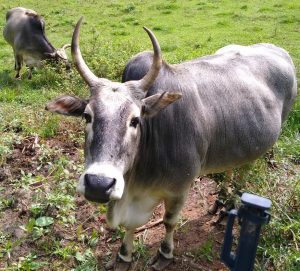
Since COVID-19 erupted in the U.S., there has been a marked increase in the number of people wanting to start or re-start Agnihotra in this country and abroad. While this is great news, maintaining enough dried cowdung for those who want it has been a great challenge for some U.S. suppliers.
For those suppliers who dry their own cowdung, production is affected by weather. Rainy conditions on the East Coast persisted throughout the summer, preventing East Coast producers from building a stockpile.
Suppliers who source their product from India have also struggled this year. Due to COVID-19, shipments which were ready for transport have been stalled for months, as Customs was shut down during India’s lockdown. We received good news this week: one major supplier’s shipment has arrived in the U.S. Hopefully, it will be available for purchase soon.
Decades ago, Shree Vasant warned of coming disasters and diseases, and urged Agnihotris to work toward self-sufficiency. He recommended storing six months’ worth of food and necessary supplies, including Agnihotra supplies.
If you have access to cows, and if climate and space permit, we encourage you to look into drying your own cowdung. Richard Powers of agnihotrasupplies.com will be happy to advise you. Please contact him at rich@agnihotrasupplies.com for more information.
Recently, we learned of an organic farmer in Wisconsin with large greenhouse capacity. In the hot months, his greenhouse is normally empty. He plans to start drying cowdung and become a supplier.
If you know of people who have greenhouses which aren’t used all year long, you may want to approach them about the possibility of drying cowdung for sale.
More sources of dried cowdung are needed in the U.S. to meet the demand. If you would be interested in producing enough to sell to others, please contact Richard Powers to explore this possibility. It could be a great service as well as a source of added income.
Healing with Homa Therapy
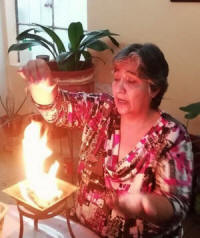 Marcela Agurto Trelles
Marcela Agurto Trelles
Piura, Peru, South America
I am a primary school teacher, Specialist in Hearing, Language, and Specialized in Autism Spectrum Disorders.
I started the practice of Homa Therapy in March, 2000. I was invited by my cousin, Pilar Agurto. I noticed she had changed positively and I got interested. I said, Something is happening here.
At that time, I was the principal of the Teresa de Calcutta Educational Institution. Although it was a regular school, all the children who attended were children with different educational needs. They were children with attention deficit disorder, language, learning and behavioral disorders. They were very restless.
Personally, I used to go to mass and it was hard for me to clearly hear the priest’s preaching. After attending the first 15 days in Homa healing fires, I noticed that:
1) The preaching was very understandable. I heard it very well. My attention and concentration had improved.
2) In spite of the family and professional problems I was going through, I realized that my attitude towards them was different. I was calmer and happier. My attention improved and I wanted to keep going on with Homa Therapy.
It was those two experiences that marked me and opened the door to apply Homa Therapy at the school. I thought that those changes that I had experienced could happen to the children of the institution and it would help their learning, language and behavior.
With the help of Pilar, we developed a whole project for the application of Homa Therapy for children and parents. The results were more than surprising.
The children were more attentive; they behaved better. Just by being more focused, their learning improved. They showed more confidence in their participation. I could say that every new child entering our school showed positive changes in short time for the children in the institution had been receiving Homa Therapy with the healing fires.
I must tell something that can be taken as evidence of the practice of these healing fires. I used to call the school the days I wasn’t attending. Thus, the secretary could inform me of how the children were behaving. But the noises I heard in the background of the call also could tell me how the children were. One day, after Homa Therapy had been constantly applied at the school, I was unable to attend and, as always, I called the secretary to inform me. Oh surprise! When I called, there was such silence in the background that I had to ask the secretary if the children had not been attending school. She answered me that all the children were present and they were working.
I can also state that the performance of the children improved markedly. Their attention, concentration, memory had improved not only in the school environment but also in their family situation. This, I know, due to the fact that the parents came to tell me that the development of the children at home and in the home work/studies had improved.
Another anecdote, during the “First International Forum of Homa Therapy – Healing Fires,” Abel Hernandez asked me to narrate my experience about our school. I am of few words, especially speaking in public with a full audience of countless guests, even from other countries. I felt that I was dying of fear.
Abel recommended to do Tryambakam Homa during the event and Agnihotris took turns.
I remember that I was with a father of one of our children, and at the time of my participation I told him that I was afraid to talk. Besides, it was the first time I participated in such an event. During my speech I was aware of the fluency of my words and I did not feel any fear. All went well. At the end of the meeting, that same father said to me, “How would you have spoken if you were not afraid?” I was surprised and happy to have achieved what I had thought impossible.
I worked with these children until 2013. Nowadays, I dedicate myself exclusively to treating children individually with language and learning difficulties. And, I program that child who needs it the most during the hours of Agnihotra; that is to say, the cognitive therapy that I offer plus Homa Therapy. Homa Therapy helps me to help these children who need more attention.
My thanks go to God who led me to Abel and Aleta; I am infinitely grateful for the tools given to fulfill the mission that God gave me.
From Shree Vasant’s Teachings
On Yajnya
Whole of nature is in a state of imbalance. When you have imbalance, this leads to confusion. If it is allowed to continue with no preventive program, in effect this eventually brings about a total chaotic state of affairs. Agnihotra helps to set right the energy cycle. Yajnya done at full moon and no moon also creates the balance that nature is missing. We must work fast. No excuses. Everyone should participate in ongoing Yajnyas.
On Agnihotra and Trees
Trees will yield fruits double the size and with twice the meat if Agnihotra and Yajnya are performed regularly in the orchards. Orange would be a good fruit to begin with, as it will give quickly, almost immediate results.
More people should begin to perform Agnihotra under a tree. This makes the tree happy and the tree dances and sings. Also the birds are much attracted to Agnihotra and this heals them.
On Problems and Worry
Proper meditation is very important for you. You must observe daily the timings given. This will help to stabilize you, and your mind will remain clear all day long.
Do not worry for the world. Your own problems are enough for you to solve. If everyone concentrated on problems of the world and did nothing to further his own growth, what would become of the world? Practice what you believe in. If you believe in proper diet, institute this in your daily life. If you believe in yoga, meditation, whatever you see as important for development of mind, body or soul, do this. Speak less about what you do. Let your example guide others.
On the other hand, do not become so obsessed with your own difficulties that you do not see the problems of others. Simply, the more you improve yourself, the easier it will be for you to help others.
Fivefold Path for Happy Living
1. Yajnya
HOMA Therapy is the science of purification of the atmosphere through the agency of FIRE. AGNIHOTRA HOMA (YAJNYA) is the basic HOMA. It is tuned to the biorhythm of sunrise/sunset and gives nutrients to the plant kingdom, removes diseases in a certain area and removes tension on the mind. This is the basic process in the Vedic sciences of medicine, agriculture, climate engineering and interplanetary communication.
2. Daan
Sharing of your assets in a spirit of humility. This corrects imbalance in financial matters and creates non-attachment to worldly possessions.
3. Tapa
Self-discipline of body and mind. This is conducive to a change in attitudes of mind and body. It results in a harmonious state of mind.
4. Karma
“You reap as you sow.” Always practicing good Karma (actions) diminishes the burden of negative Karma and one begins to invest in his own future. This means that what you do today will bring its fruits. Sowing seeds of love and kindness will bless my garden with plenty of love. Do Karma for self-purification.
5. Swadhyaya
Practice Swadhyaya (Self-study) for liberation. Who am I? Why am I here? My work on this planet is to learn to react with total LOVE with each opportunity given to me.
This is the Fivefold Path for happy living on the planet. By practicing the Fivefold Path you become better members of your society, group, religion, community, etc.
Publisher: Fivefold Path Inc.
Parama Dham (House of Almighty Father), 278 N. White Oak Dr., Madison, VA 22727 USA
Editor: Lisa Powers
Published seven times yearly.
Please direct all Satsang correspondence to the Editor.
Opinions expressed by contributors are not necessarily those of Satsang.
ISSN 0735-1321
